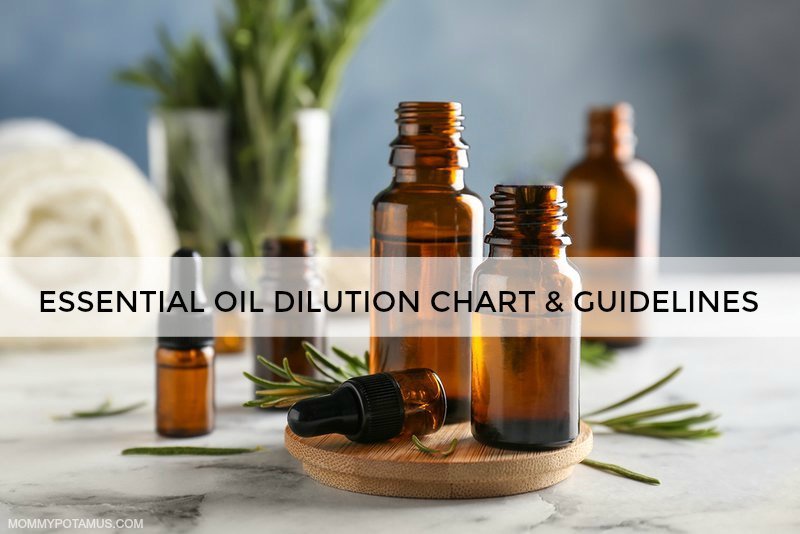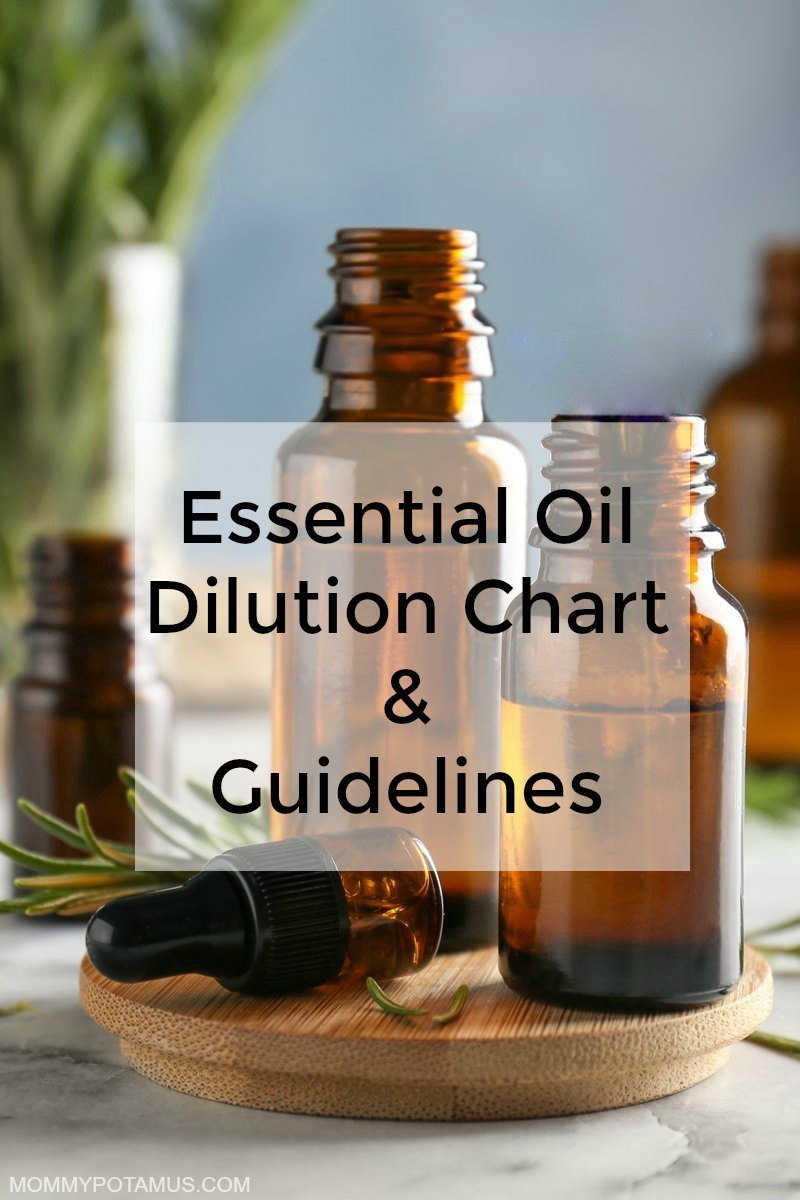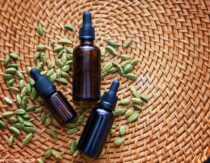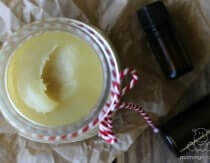
So, you’ve fallen in love with essential oils for everything from brushing your teeth and making citronella candles to relaxing tense muscles, soothing bug bites, lifting your mood and more? I totally get it. Personally, all I need now is one that washes dishes and I’m pretty much set.
Figuring how to use them SAFELY, though . . . well, that was a journey for me.
When I first started out, I didn’t receive much guidance about how to use them appropriately. That’s why I began working toward an aromatherapy certification through Aromahead Institute.
Safety is my top priority, so whether it’s this vapor rub, or another natural remedy or beauty recipe, I always consult Essential Oil Safety while creating products for my family and yours.
If you’re not familiar with it, Essential Oil Safety it was written by world renowned essential oil expert Robert Tisserand and his co-author, Rodney Young. Considered the most evidence-based resource available, it took 10+ years to write and contains over 4000 citations.
I’ve already shared with you my lists of safe essential oils for children and pregnant/nursing mamas, both of which were compiled based on Tisserand’s and Young’s book. In this post we’ll cover some guidelines I’ve found helpful for determining how much to use for specific situations.
Why dilute essential oils?
Though there are times when certain oils can be applied undiluted or “neat,” diluting is generally recommended for topical use. There are two primary benefits of this approach:
- It may increase absorption by spreading the oil over a larger surface area
- It decreases the likelihood of a negative reaction
When is it appropriate to use oils “neat”?
Certain situations that affect small areas, such as a burn, bug bite, or forehead tension may benefit from the occasional use of undiluted oils.
I’ve used a drop of undiluted tea tree (Melaleuca alternifolia) to soothe a bug bite. Tea tree and lavender (Lavandula augustifolia) are typically considered the safest options for neat application.
Certain oils – ylang ylang and lemongrass, for example – are very likely to cause a reaction and should never be applied undiluted.
How do I dilute for regular use?
Carrier oils such as avocado, grapeseed, sweet almond, hazelnut, jojoba, coconut and fractionated coconut oil are ideally suited for diluting to safe topical levels. We’ll cover how many drops of essential oil to add to your carrier oil later in this post.
Diffusion or topical application – which one is better?
It depends on what you want to accomplish. According to Robert Tisserand, inhaling essential oils is a very efficient way to absorb them quickly into the bloodstream.
Inhaled substances pass down the trachea into the bronchi, and from there into finer and finer bronchioles, ending at the microscopic sac-like alveoli of the lungs, where gaseous exchange with the lungs mainly takes place.
The alveoli are extremely efficient at transporting small molecules, such as essential oil constituents, into the blood.” (Essential Oil Safety)
A good rule of thumb for diffusing is 30-60 minutes on, one hour off, then repeat if desired.
Topical application is considered a better choice when you want to directly benefit the skin, or when you want absorption to occur over a longer period of time. (It takes time for essential oils to get through the skin.)

How To Dilute Essential Oils For Topical Application
The dilution guide below is based on information found in Essential Oil Safety along with input from a clinical aromatherapist. Please note that these are guidelines and not rules. The individual needs of a person and the oil being used should also be considered.
Also, just because 1% dilution (1 drop of essential oil per teaspoon of carrier oil) is considered appropriate for a situation does not mean that all essential oils can be used at that concentration. For example, clove bud essential oil can be irritating if used over a 0.5% dilution (1 drop in 2 teaspoons of carrier oil).
If you don’t have a copy of Essential Oil Safety, you can find the maximum recommended dilution for many popular essential oils here and here.

In general, here are some guidelines I have found helpful when deciding how much to use in a particular situation:
.25% dilution – For children age 3 months to 2 years. Click here for more information on using essential oils on children under two.
1% dilution – For children two through six and individuals who need to take a more gentle path, such as those who are working to heal from serious health concerns or may have compromised immune function. This dilution is also a good rule of thumb for pregnant/nursing women, but in some cases a dilution of up to 2.5% may be appropriate.
1.5% dilution – For children ages six through fifteen. For ease of use, I sometimes round down to a 1% dilution. It’s hard to measure out half a drop!
2.5% dilution – This is typically the dilution recommended for most adults. It is also commonly used for daily body care products and massage oils. For facial skin care, a 1% is better. Because half a drop is hard to measure, I usually round down this dilution to 2%.
3 – 10% dilution – Most often used for support during certain kinds of injuries or acute illness. The dilution ratio depends on the situation, the age of the individual, and the type of oil being used.
25% dilution – Used on rare occasions to soothe muscle cramps/spasms, bruising, etc.
Need a specific dilution not covered here?
This customizable dilution calculator is pure genius.
Want a printable guide that you can refer to later?
No problem, I’ve created one for you as a gift for signing up for my newsletter. You’ll also get updates when I post about natural remedies and other topics, exclusive gifts and coupons (I was able to give away a jar of free coconut oil to anyone who wanted it recently!), plus other goodies.
Sign up using the form below.





I just bought my copy of ‘Essential Oil Safety’…wow…what a detailed book!! Could you write a blog on how best to read it LOL!?! 🙂
Thank you, great posts!
thanks for this helpful post, heather. i also read 1% of essential oils is recommended for the elderly. i was glad to find that out as i’m currently making a gift basket for my elderly mom.
This is such great info to get out there. Some of the uses for EOs I see online, especially with kids, make me so nervous now that I know about safe use. The more safety info we can all get out there, the better!
Thank you so very much for this. I was recently mixing some EOs for my mother and found out some of my EOs would cause higher blood pressure. She is 89, and sometimes I wonder if I should be using children proportions for her. What do you think?
Thank you so much,
Carol
Hi Carol, yes I would use the dilution that is recommended for children/pregnant/nursing mamas. 🙂
Hi just want to ask what eo is good for fever and flue. T x
Hi Heather,
I’m enjoying reading through your posts. Recently bought a bunch of essential oils and my house smells wonderful.
Hoping to scare aways ants, using your advice about cotton balls with peppermint oil in cabinets.
I have a question. Are the Now Foods oils, food grade and edible? Can I use them in desserts?
Thanks in advance!
Radhika
You should not ingest essential oils unless you are under the care of a certified aromatherapist. They are not the same thing as spices.
According to Lorann Oils, some of their oils are GRAS for use in tiny amounts as a flavoring for cooking and baking.
NOW brand is not a brand I would consider ingesting. I do take some oils internally, and I do indeed have a few NOW brand oils even, but those ones I would never take internally. I use them with care topically as well. I consider them more of a fragrance oil. This is just my opinion. I’m not confident in their purity as much as I am with a few other producers.
Have been learning about essential oils through my daughter, Angelise Schrader.
Enjoyed this article. Looks doable since we have the coconut oil.
Hello, I am really grateful for all your information as I am really gun shy about oils because of the contradictions. After reading your posts I feel a lot more confident.
Regarding dilution do you keep the amount of carrier oil the same even when adding multiple types of oil? For example, if I am going to mix lavender and frankincense for my son’s cold do I use 4 teaspoons of carrier oil and 1-2 drops of each different EO?
Thanks!
THIS IS THE SAME THING I’VE BEEN TRYING TO FIND OUT. I JUST ASKED THE AMAZON COMMUNITY, NOW I’M WAITING FOR A RESPONSE.
I’m not sure what dilution you are shooting for, but if you’re going for a 1% dilution in 4 teaspoons of carrier, you would need to use 4 drops total of essential oil. That could be 2 drops lavender and 2 drop frankincense or any other combination, but the total number of drops would stay the same.
Heather,
I have a question. So after making a 2% dilution – how liberal can I be in application? I have been applying approx. 15-20 drops of my 2% dilution after showers. I was just wondering if there are any considerations to application after diluting.
Thanks!
A 2% dilution is considered appropriate for whole-body application 🙂
What dilution is acceptable for bath salts? I am using 8 oz epsom salt, 1 tsp of carrier oil and 5 drops EO, but only using 1/4 cup per bath. So technically it’s a 5 % dilution, but only a 1/4 tsp of the diluted oils are being used per application. Is that ok or too high? Thanks!
Hi I have a two year old little girl who’s ears we pierced at the end of August. Her right bear bcaem a little red and swollen and went away. It happened again ( not as bad and went away in a few days of using ear cleaning solution. It looks healed but there is a bump on the back. Not sure if it’s just irritated or scar tissue. I talked with dr. She said I could use tea tree oil. I am trying to decide what dilution and how exactly to apply, mix it with ear cleaning solution? Apply mixed with organic coconut oil or neat?? If it is scar tissue I don’t want it to keloid. I would feel awful. Any advice please?! I have essential oils and love them use them on my shelf but I am cautious as I know my babies are more sensitive. Thanks in advance.?
I bought my daughter a necklace with a lava stone on it so she can use essential oil in it for her migraines. How much fractionated coconut oil should she mix with the essential oil to put on the stone? The essential oil has; peppermint oil, Spanish sage oil, cardamom oil, ginger oil and sweet fennel oil as a mixture for migraines.
This blog is very informative ! I’m so curious about the potency of each dilution. I mean if one has serious illness like stroke, TBI, cancer, hypothyroid etc. What is the best dilution ? 10 %, 20% ? or even 3% – 5% can heal faster? I can’t find any detail info about this in any blogs. is 10%-20% dilution more potent and faster to heal serious illnesses ? or 3-5 % dilution is potent and fast to heal too ? Do you have any recommended blog about this? Thank you!
I think in those cases it would be best to work with a clinical aromatherapist that can offer tailored recommendations.
I recently received jvoov essential oil.With this brand an I able to dilute and use in food or drinks? If so how much will I need to dilute?Also what mixer of oils do I use for anxiety for my 15 year old.Thanks for what info I recieve.
I don’t recommend ingesting essential oils (regardless of brand) unless under the care of a qualified practitioner.
Thank you for saying that. Total
common sense.
What essential oil and carrier oil would you recommend for flat warts on backs of hands? If you could please give me a dilution for both, that would be greatly appreciated. I am a 50 year old woman.
Is thats Lavander EO need diluation before used for kids age 5 years old?
Wondering what you think about this idea of “balance” of essential oils talked about in this article: https://orawellness.com/whats-in-healthy-mouth-blend/. I need to find a more economical way to use essential oils for my teeth and gums so what dilution would you recommend and which oils of the ones mentioned int he article would be good enough or should I rotate them? My biggesest question is does brushing by teeth with essential oils constitute injesting which you wouldn’t advise or if I rinse after is that good enough or then do I lose the benefits for the antimicrobial effect.
Brushing with essential oils is not considered ingesting. I wrote a little about the balance mentioned in this article
Is it safe to apply essential oil neat on a lava bead for a child’s bracelet? I diluted lemon and now can’t smell it. Was thinking of a leather bracelet to apply neat so it doesn’t touch the skin if a drop neat isn’t a good idea. Thanks!
Hi Deborah, that’s a great question. I personally would err on the side of caution and use the leather bracelet. It’s possible that the bead would be fine, but it depends on how much is added and how well the oil has been absorbed before putting the bracelet on.
Great site! Can anyone recommend how to thin E/O’s and A/O’s for use in a nebulizer?
I think nebulizers typically use undiluted essential oils, so I have no recommendations along those lines. Can you please clarify what mean by A/O’s? I’m not familiar with that abbreviation.
Hi Heather! Absolute oils. These are particularly thick, as you know. So I often will thin them a bit with a type of pure alcohol (Golden Grain). It works pretty well since the Golden Grain is odorless. But wondered if there was a tried and true method. Am I allowed to mention my nebulizer product or my website?
Hi Greg, thanks for your question. It is against my comment policy to publish self promotional product recommendations.
Hi Heather I started making perfumes recently. Some of the essential oils has a warning on the packaging that says the oil needs to be diluted before application on the skin. When I am making alcohol based perfume should I dilute that EO with a carrier oil first and than add in to the EO mixture or can I just add it to the mixture directly?
Please send me the dilution chart
This is one of the most informative websites I’ve come across, very useful, thank you.
What is your favorite brand of EO?
Great details. I’m currently buying ylang ylang right fron the producers in Comoros.
Will be useful!
Thanks again
Thank you very much for the chart and information. This is the first time I’ve used any essential oil.
Thanks for you always great information! I already subscribe to your newsletter so how can I get a copy of your printed chart without signing up again? Thanks!
Hi Denyse, you can fill out the form to “sign up” in order to get the chart. You’ll still just get one email from me on Sundays – not two. 🙂
Dear Heather
Hopefully, it will be the last time I have to bother you.
I have printed the recipes and I do not know in which order I have to use
them. Or do I have to use some of them on alternative days?
Can they ALL be used each day morning and night?
Honey Face Wash
Apple Cider Vinegar Facial Toner
Oil Cleansing
Hyaluronic Acid Serum
Hydrating Face Serum
I would like to add that I am 82 with of course the usual wrinkles; mainly
due to sun exposure and lots of age spots.
Do I have to introduce Tallow balm as well?
Sorry about all these questions as this is all new to me.
Very best wishes and by the way, I love your food recipes.
Ingrid
Love all the wonderful information!